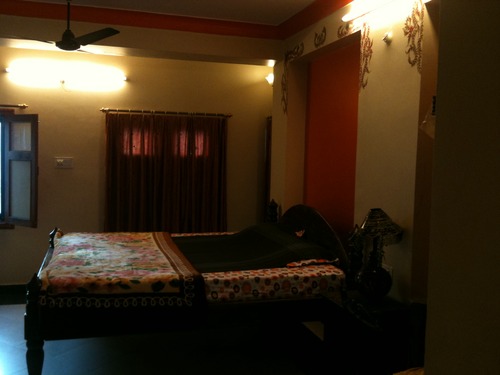I’ve always been quite fond of kites. I remember that I used to think it was a pity that there seldom was enough wind where I grew up to really support any intensive amount of kite-flying. That’s a problem that Ahmedabad in Gujarat definitely didn’t have. In fact, Ahmedabad (as many places in north India) has a holiday (as in day off work) completely dedicated to kite-flying. I decided that this couldn’t be missed.
Arriving with the night train from Delhi, I was met by a big sign saying that this was the home of the Tata Nano – you know that car of cheapo-fame that the Tata group set out to produce a couple of years back. The factory was originally to be constructed in Singur in West Bengal, however after farmer’s started protesting due to what amounted to a forced landgrab by the West Bengal state government, the Tata’s decided to move the factory here to Gujarat. Farmers and workers in Singur, having been displaced, had their land & livelihood taken away for a pittance, as well as been ditched on promised jobs never created, are still facing the fall-out of these incidents.
The Tata factory is not the only industry to open in Gujarat, indeed, it’s one of the richer states in India, and it’s something that can certainly be felt in Ahmedabad. Outside of the older areas of the city stretches great boulevards with restaurants, clubs and manicured parks. One person who’d like to lay claim to these “achievements” is Narendra Modi, the chief minister of Gujarat. This jet-setting politician has been heavily courting foreign investment and has become a bit of a poster boy in for “industrializing India” in investor’s eyes. When I was there he was just about to host “
Vibrant Gujarat” a conference bringing together politicians, businessmen and investors from all over the world in Ahmedabad. Even the Economist
gave him a rosy sheen recently.
However, Modi also represents the very darkest side of this supposedly friendly and manicured place. Gujarat, home-state of Gandhi and the place where his ashram was located, have seen some of the worst ethnic tensions in recent years in all of India. In
2002, over 1000 people (mostly muslims) were killed in religious riots. Modi, who represents the far-right party BJP party and have been linked to paramilitary RSS, oversaw these horrific events and seems to have not only let it happen but sometimes even incited and/or facilitated these events. He has since taken measures to fudge the as of yet unfinished inquiry into the events. This is a picture of Modi that you might miss if you’re reading foreign press – and while it might be comfortable to look straight ahead at the well tended avenues and “developed industries” you don’t have to go very far to find slums of displaced people (again mostly muslims).
So, what about the kites? Well, I did do quite a bit of kite-watching, but I must admit that tracing the strict separation between Hindu and Muslim districts and slums, as well as imagining the tensions and destruction that must have been there while visiting mosques and muslim meat-markets had me a bit distracted.



























































